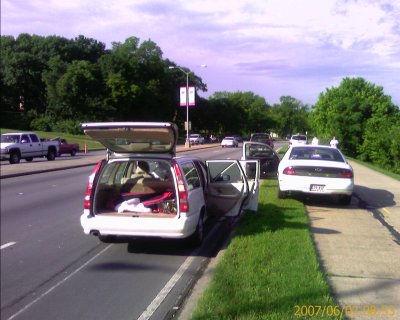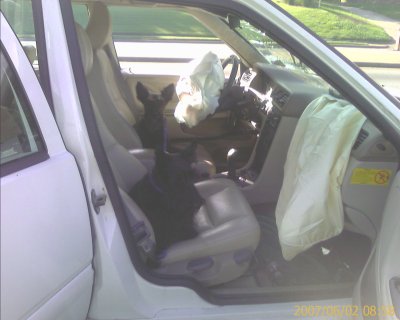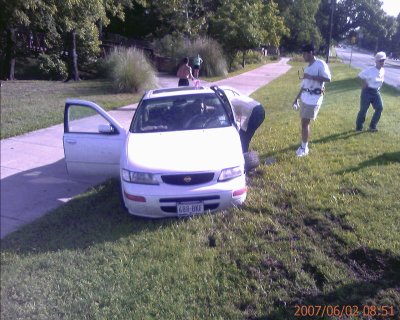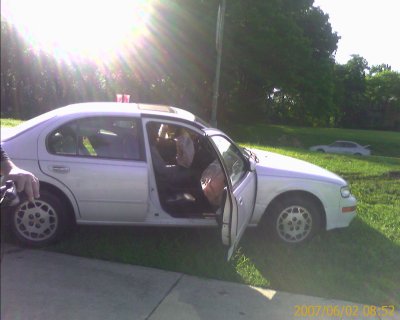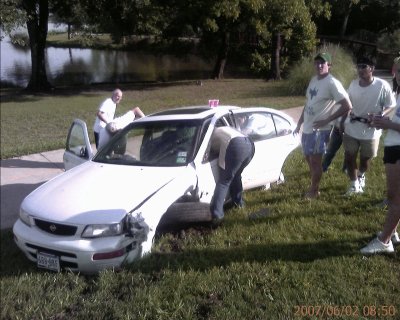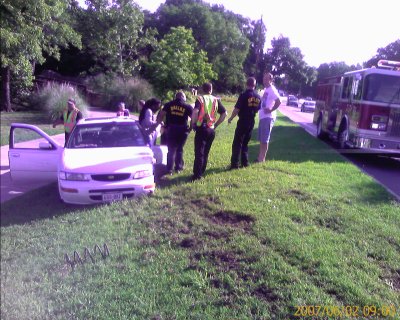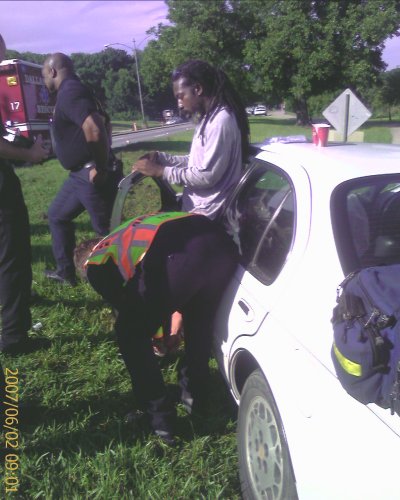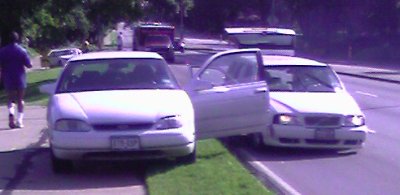(This is continuing from where I left off.)
I got a replacement high side port valve and compressor oil. Here is the valve:
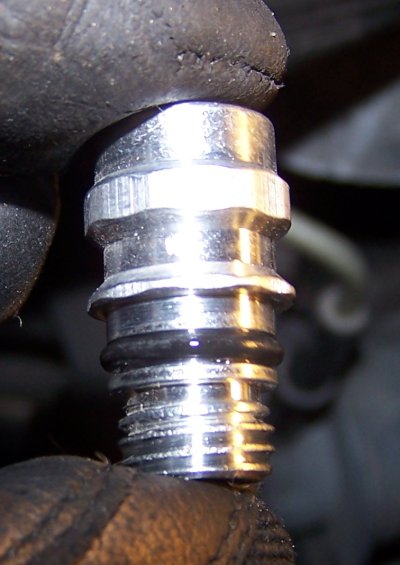
The old one came right out:
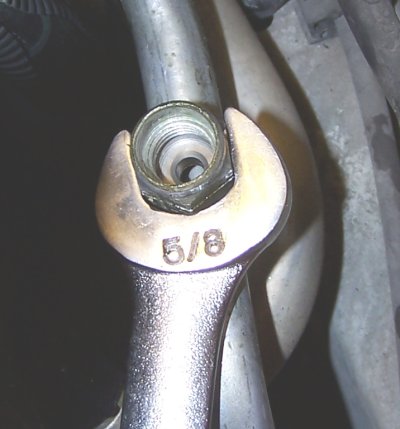
Once installed, the new port one looks like the old one, so I won’t bother you with another picture.
After flushing and adding new oil to the vacuum pump, I ran into another hiccup: the pump had a 1/4″ male flare fitting, but my R-134a gauge and hose set appears to have a 5/16″ female flare fitting. Argh! A last minute trip to Home Depot taught me that 5/16″ flare fittings are unusual.
Coming home defeated, I remembered that I had an extra high side service port for a R-134a retrofit. This was left over from my Nova. Luckily, it fit the vacuum pump!
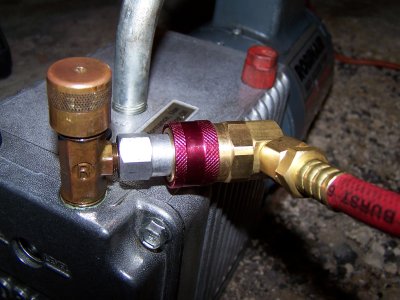
This is a weird arrangement, but it works. I pump through the red hose instead of the yellow hose. The yellow hose was hooked up to a can tap on a R-134a can.
That vacuum pump is awesome. It sucked down to an indicated 31 in/Hg in a hurry:
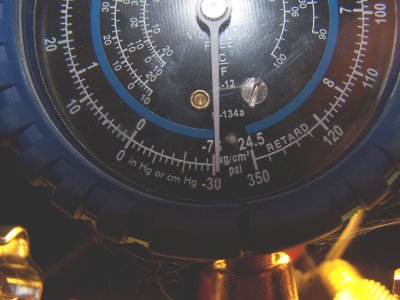
I doubt that was really 31 in/Hg. I’ll bet the gauge set is actually off a bit.
Here was the whole setup:
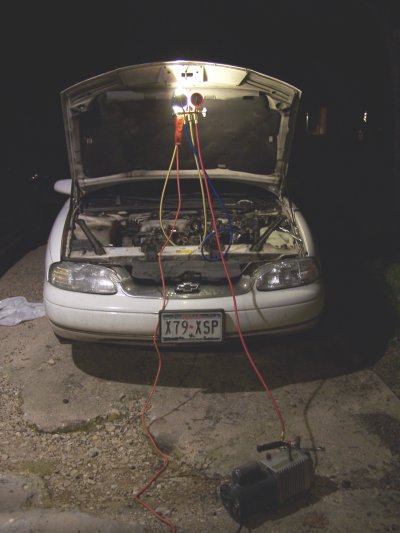
I closed off the gauges for the leak down test. In about 15 minutes, the needle crept to around 27 in/Hg. Normally that is a bad sign; if your system is properly sealed, the vacuum won’t budge a bit. However, I didn’t have a high side port cap installed, and I wasn’t totally confident in the low side hose’s attachment to the low side port. Plus, it was getting late, I had a 9:00 AM meeting the next morning, and I needed to make something happen. So I just let that small loss be a passing grade, figuring I could check it later and hoping the leak was because of the auxiliary issues and not an actual system leak.
Factory spec for my car is 30 oz of R-134a. I sucked down two 12 oz cans, bringing me to 24 oz. But what do I do about the remaining 6 ounces?
Professional refrigerant charging equipment uses a large gas cylinder, similar to propane grill cylinders, that’s on a scale. As the car’s A/C sucks in refrigerant, the scale measures the change in weight of the cylinder.
I realized I could do the same at home:
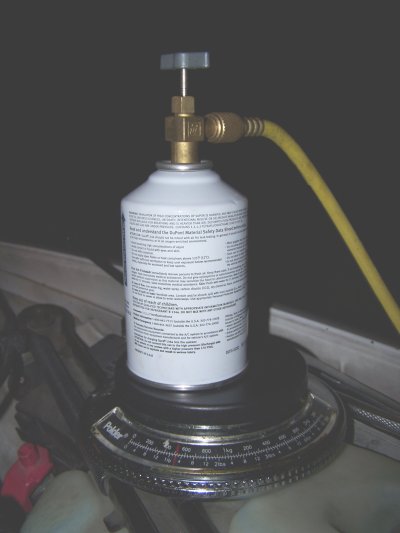
That’s a can of R-134a sitting on a kitchen ounce scale! It worked great.
I checked my pressures over the next few weeks, and they held fine, strongly suggesting the new high side port solved the entire refrigerant leak.
But here’s the problem: the A/C didn’t feel as cool as before, especially when at a stop. The vent temperatures “felt” OK, but the car’s interior just didn’t feel the same. And it wasn’t that humid, system undercharge feeling, either.
Each time I checked the pressures, the ambient temperature was in the mid-80s. The low side pressure was just below 30, and the high side pressure was around 250. Those seem like OK pressures, so what gives?
Consulting with a guy who does a lot of A/C work, he suggested I shoot a few more ounces of refrigerant in the system. I put in the remaining 6 ounces from that half-used can, and the cooling only got a little worse. Checking pressures, the high side stayed around 250 or so, but the low side never got below the low 30s.
Today, I recaptured some of that extra refrigerant with my homemade refrigerant recovery system!

Yup, that’s the empty R-134a can on an ounce scale to the side:

I never disconnected it from the hose set. And it actually would not be empty; it would still have at least 30 or so PSI of R-134a in it because there is no way a full system would suck it down more.
The plan was to gradually open the high side valve on the gauge set until the can had 12 oz or the low side reading got to the mid-20s. I hit both markers at about the same time. Surprisingly, even with a theoretical 6 oz undercharge, the system still did a 250 PSI on the high side!
Here’s the high tech device I use to keep the engine RPMs up during A/C diagnostic operations:
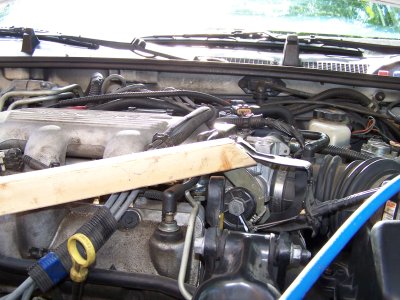
Here’s the gauge reading after removing all 12 ounces:
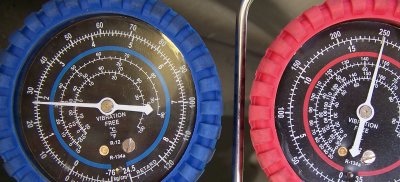
I don’t get it.
Over the last few weeks, I was complaining to a couple of people about my vent temperatures. Turns out that my thermometer was reading 5-6 degrees too high. The black-needle thermometer is the one I was using, and the red-needle one is one of our kitchen thermometers:
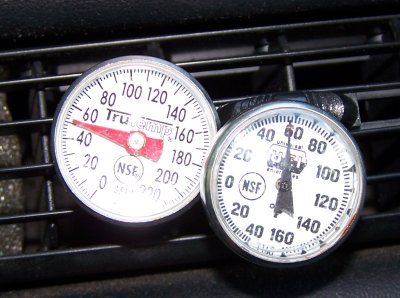
I later verified both thermometers against a verified digital thermometer in the house, and the red one is spot on.
It will be interesting to see how the system runs now with a theoretical 6 oz undercharge.
